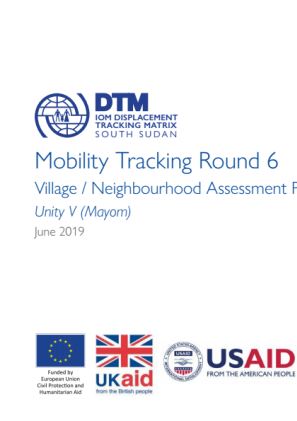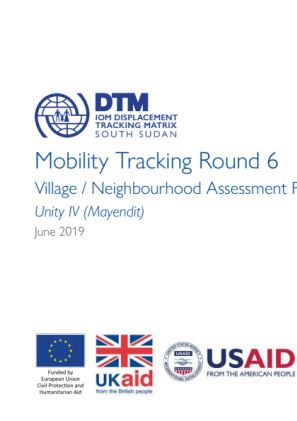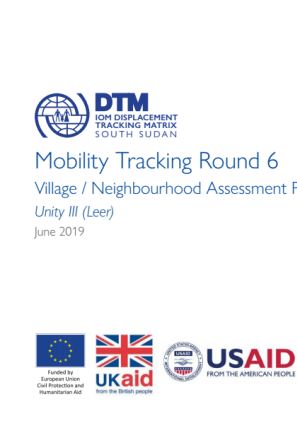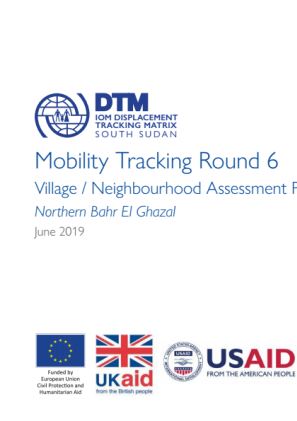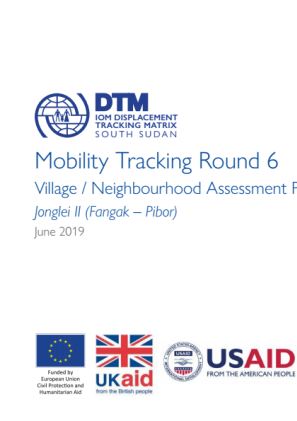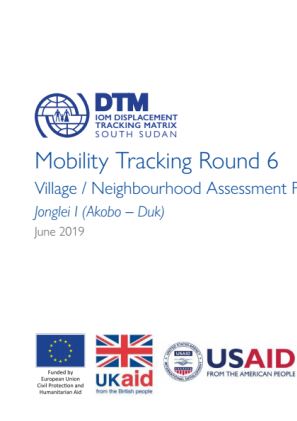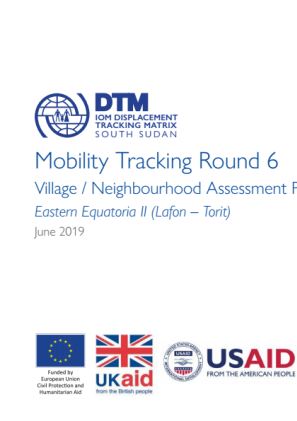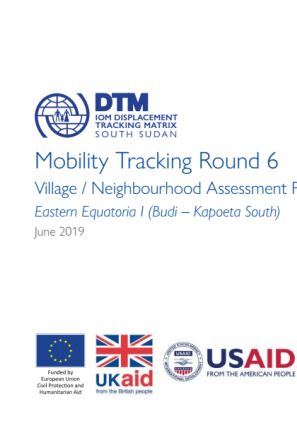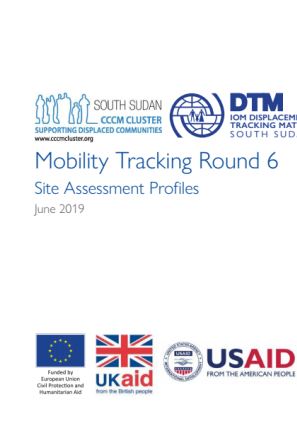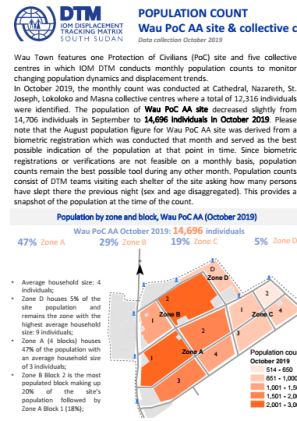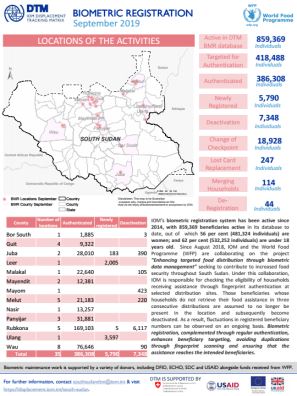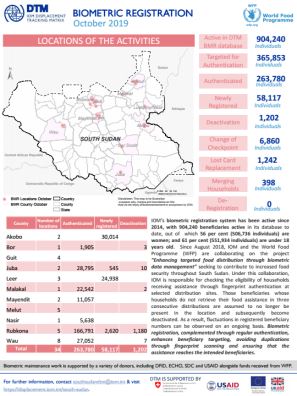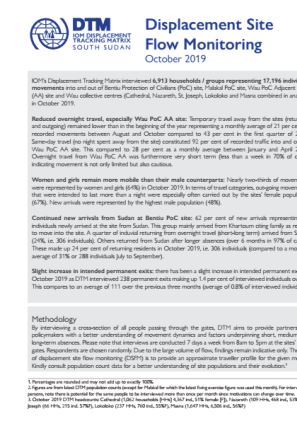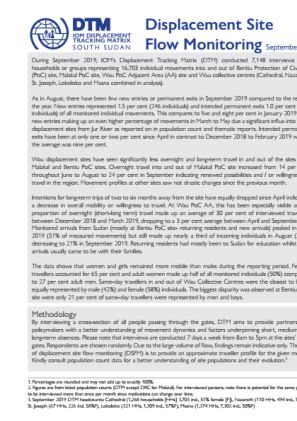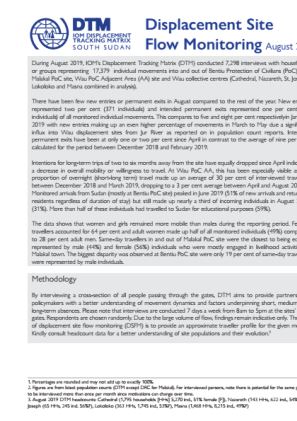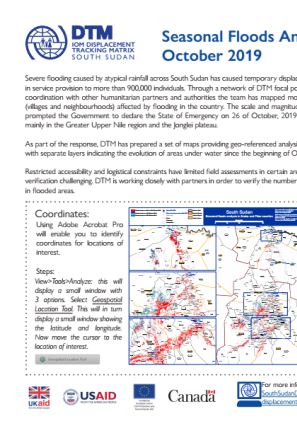-
Countries
-
Data and Analysis
-
Special Focus
-
Crisis Responses
South Sudan
South Sudan
Suivi des PDI
Mouvements de déplacement
1,121,000
IDMC 2023
cycle de collecte de données
À propos South Sudan
Conflict and instability in South Sudan have resulted in large-scale internal and cross-border displacement since the December 2013 crisis of over 4 million individuals. In September 2018, the Revitalized Agreement for the Resolution of the Conflict in South Sudan (R-ARCSS) was signed between the major warring parties. Whilst overall there have been improvements in security since and returns are ongoing, fighting and communal clashes (frequently linked to cattle raiding) continue to trigger new displacements and the situation remains volatile.
DTM South Sudan’s toolbox is designed to meet critical information gaps during all phases of response, from preparedness, to intervention and transition/recovery. DTM South Sudan provides country-wide figures on the numbers, locations and priority needs of IDPs and returnees updated on a quarterly and ad-hoc basis. The programme undertakes biometric registration in selected parts of the country to support partners with reaching intended beneficiaries during distributions. Flow monitoring data is collected on a daily basis at displacement sites, key transit hubs and border crossing points to identify mobility dynamics of migrants including IPDs and returnees. Through ad hoc surveys, headcounts, infrastructure/service mapping exercises and other assessments, DTM provides additional information to support partners in planning their response.
Contacter
IOM South Sudan DTM Juba
ISSDTM@iom.int
Current Donors
- Switzerland
- Japan
- DFID
- ECHO
- OCHA
- OFDA
- Canada (DFATD)
- WFP
- UN Peacebuilding Fund
- World Bank
South Sudan — Village / Neighbourhood Assessment Profiles R6: Unity V / Mayom (June 2019)
This summary presents the main findings from the multi-sectoral location assessment component of the sixth round of Mobility Tracking in South Sudan, complementing the Baseline Assessment Summary Report. Data collection for Mobility Tracking Round 6 took place in June 2019.
South Sudan — Village / Neighbourhood Assessment Profiles R6: Unity IV / Mayendit (June 2019)
This summary presents the main findings from the multi-sectoral location assessment component of the sixth round of Mobility Tracking in South Sudan, complementing the Baseline Assessment Summary Report. Data collection for Mobility Tracking Round 6 took place in June 2019.
South Sudan — Village / Neighbourhood Assessment Profiles R6: Unity III / Leer (June 2019)
This summary presents the main findings from the multi-sectoral location assessment component of the sixth round of Mobility Tracking in South Sudan, complementing the Baseline Assessment Summary Report. Data collection for Mobility Tracking Round 6 took place in June 2019.
South Sudan — Village / Neighbourhood Assessment Profiles R6: Unity II / Koch (June 2019)
This summary presents the main findings from the multi-sectoral location assessment component of the sixth round of Mobility Tracking in South Sudan, complementing the Baseline Assessment Summary Report. Data collection for Mobility Tracking Round 6 took place in June 2019.
South Sudan — Village / Neighbourhood Assessment Profiles R6: Unity I / Abiemnhom – Guit (June 2019)
This summary presents the main findings from the multi-sectoral location assessment component of the sixth round of Mobility Tracking in South Sudan, complementing the Baseline Assessment Summary Report. Data collection for Mobility Tracking Round 6 took place in June 2019.
South Sudan — Village / Neighbourhood Assessment Profiles R6: Lakes II / Rumbek North – Yirol West (June 2019)
This summary presents the main findings from the multi-sectoral location assessment component of the sixth round of Mobility Tracking in South Sudan, complementing the Baseline Assessment Summary Report. Data collection for Mobility Tracking Round 6 took place in June 2019.
South Sudan — Village / Neighbourhood Assessment Profiles R6: Lakes I / Awerial – Rumbek East (June 2019)
This summary presents the main findings from the multi-sectoral location assessment component of the sixth round of Mobility Tracking in South Sudan, complementing the Baseline Assessment Summary Report. Data collection for Mobility Tracking Round 6 took place in June 2019.
South Sudan — Village / Neighbourhood Assessment Profiles R6: Jonglei III / Pochalla – Uror (June 2019)
This summary presents the main findings from the multi-sectoral location assessment component of the sixth round of Mobility Tracking in South Sudan, complementing the Baseline Assessment Summary Report. Data collection for Mobility Tracking Round 6 took place in June 2019.
South Sudan — Village / Neighbourhood Assessment Profiles R6: Jonglei II / Fangak – Pibor (June 2019)
This summary presents the main findings from the multi-sectoral location assessment component of the sixth round of Mobility Tracking in South Sudan, complementing the Baseline Assessment Summary Report. Data collection for Mobility Tracking Round 6 took place in June 2019.
South Sudan — Village / Neighbourhood Assessment Profiles R6: Jonglei I / Akobo – Duk (June 2019)
This summary presents the main findings from the multi-sectoral location assessment component of the sixth round of Mobility Tracking in South Sudan, complementing the Baseline Assessment Summary Report. Data collection for Mobility Tracking Round 6 took place in June 2019.
South Sudan — Village / Neighbourhood Assessment Profiles R6: Eastern Equatoria II / Lafon – Torit (June 2019)
This summary presents the main findings from the multi-sectoral location assessment component of the sixth round of Mobility Tracking in South Sudan, complementing the Baseline Assessment Summary Report. Data collection for Mobility Tracking Round 6 took place in June 2019.
South Sudan — Village / Neighbourhood Assessment Profiles R6: Eastern Equatoria I / Budi – Kapoeta South (June 2019)
This summary presents the main findings from the multi-sectoral location assessment component of the sixth round of Mobility Tracking in South Sudan, complementing the Baseline Assessment Summary Report. Data collection for Mobility Tracking Round 6 took place in June 2019.
South Sudan — Village / Neighbourhood Assessment Profiles R6: Central Equatoria (June 2019)
This summary presents the main findings from the multi-sectoral location assessment component of the sixth round of Mobility Tracking in South Sudan, complementing the Baseline Assessment Summary Report. Data collection for Mobility Tracking Round 6 took place in June 2019.
South Sudan — Site Assessment Profiles R6 (June 2019)
This summary presents the main findings from the multi-sectoral location assessment component of the sixth round of Mobility Tracking in South Sudan, complementing the Baseline Assessment Summary Report. Data collection for Mobility Tracking Round 6 took place in June 2019.
South Sudan — Wau PoC AA Site And Collective Centres Population Count (October 2019)
Wau Town features one Protection of Civilians (PoC) site and five collective centres in which IOM DTM conducts monthly population counts to monitor changing population dynamics and displacement trends.
South Sudan — Wau PoC AA Site And Collective Centres Population Count (November 2019)
In November 2019, the monthly count was conducted at Cathedral, Nazareth, St. Joseph, Lokoloko and Masna collective centres where a total of 11,291 individuals were identified.
South Sudan — Biometric Registration Update (September 2019)
IOM’s biometric registration system has been active since 2014, with 859,369 beneficiaries active in its database to date, out of which 56 per cent (481,324 individuals) are women; and 62 per cent (532,252 individuals) are under 18 years old. Since August 2018, IOM and the World Food
South Sudan — Biometric Registration Update (October 2019)
IOM’s biometric registration system has been active since 2014, with 904,240 beneficiaries active in its database to date, out of which 56 per cent (506,736 individuals) are women; and 61 per cent (551,934 individuals) are under 18 years old. Since August 2018, IOM and the World Food
South Sudan — Displacement Site Flow Monitoring (October 2019)
IOM’s Displacement Tracking Matrix interviewed 6,913 households / groups representing 17,196 individual movements into and out of Bentiu Protection of Civilians (PoC) site, Malakal PoC site, Wau PoC Adjacent Area (AA) site and Wau collective centres (Cathedral, Nazareth, St.
South Sudan — Mobility Tracking Report 6 (June 2019)
Whilst national-level conflict has continued in certain areas of South Sudan, notably in the Equatoria Region, other parts of the country have faced rising instances of intercommunal and localized conflict, oftentimes related to livestock which are distinguished from conflict including national a
South Sudan — Displacement Site Flow Monitoring (September 2019)
During September 2019, IOM’s Displacement Tracking Matrix (DTM) conducted 7,148 interviews with households or groups representing 16,703 individual movements into and out of Bentiu Protection of Civilians (PoC) site, Malakal PoC site, Wau PoC Adjacent Area (AA) site and Wau collective centres
South Sudan — Displacement Site Flow Monitoring (August 2019)
During August 2019, IOM’s Displacement Tracking Matrix (DTM) conducted 7,298 interviews with households or groups representing 17,379 individual movements into and out of Bentiu Protection of Civilians (PoC) site, Malakal PoC site, Wau PoC Adjacent Area (AA) site and Wau collective
South Sudan — Seasonal Flooding Maps (November 2019)
Severe flooding caused by atypical rainfall across South Sudan has caused temporary displacement and disruption in service provision to more than 900,000 individuals.
Pagination
Pagination
- First page
- Previous page
- 1
- 2
- 3
- 4
- 5
- 6


